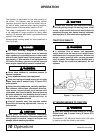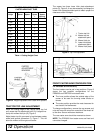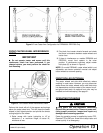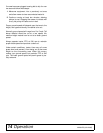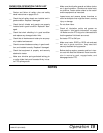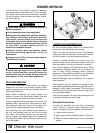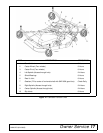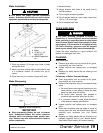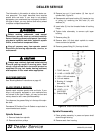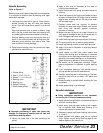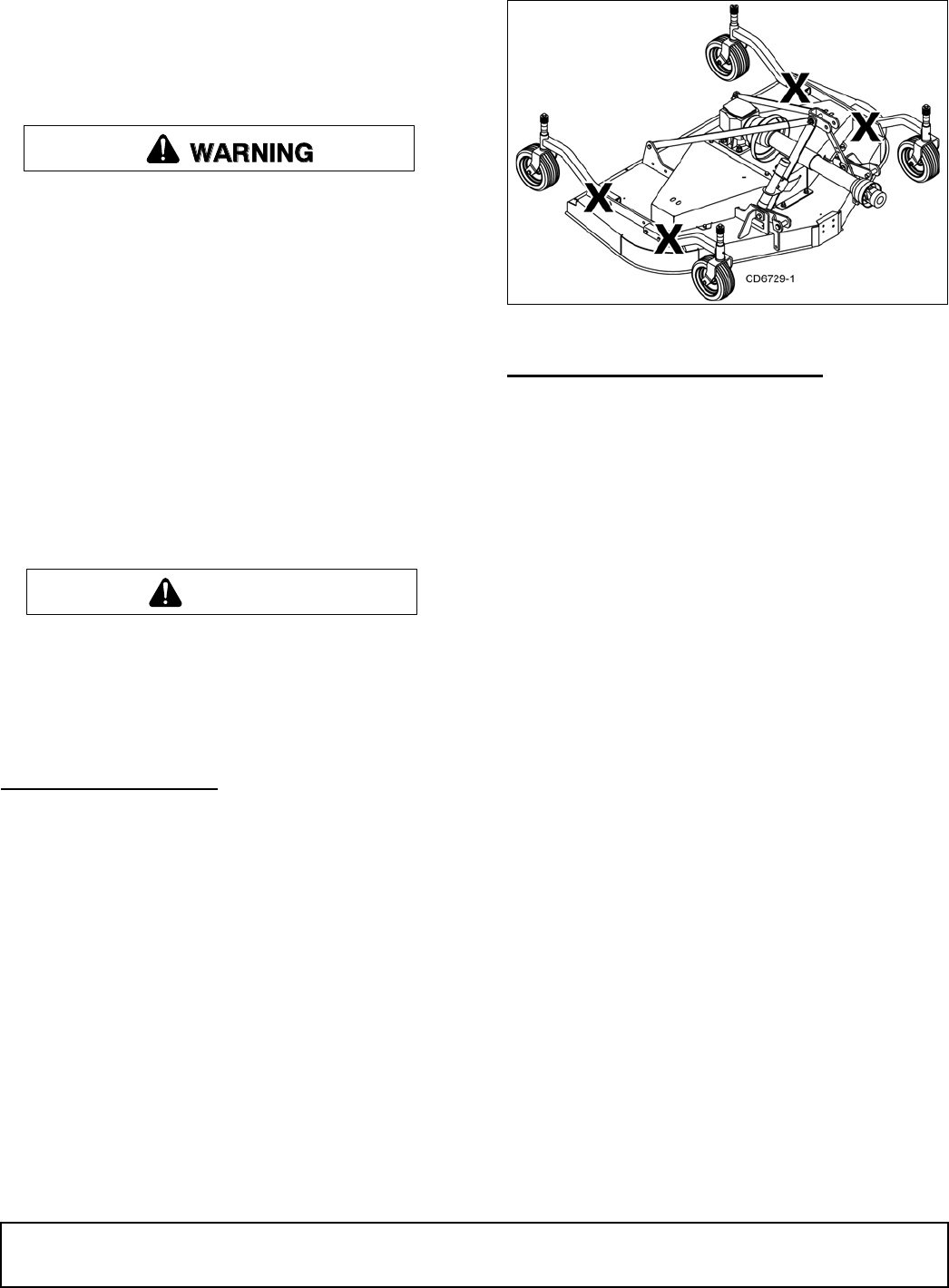
16 Owner Service
MAN0475 (9/21/2005)
OWNER SERVICE
The information in this section is written for operators
who possess basic mechanical skills. If you need help,
your dealer has trained service technicians available.
For your protection, read and follow the safety informa-
tion in this manual.
Never allow children or untrained persons to
operate equipment.
Keep bystanders away from equipment.
Before working underneath, carefully read Oper-
ator’s Manual instructions, disconnect driveline,
raise mower, securely block up all corners with
jackstands, and check stability. Secure blocking
prevents equipment from dropping due to hydrau-
lic leak down, hydraulic system failures, or
mechanical component failures.
Keep all persons away from operator control
area while performing adjustments, service, or
maintenance.
Operate tractor PTO at the rpm speed stated in
“Specifications” section.
Always wear relatively tight and belted clothing
to avoid getting caught in moving parts. Wear
sturdy, rough-soled work shoes and protective
equipment for eyes, hair, hands, hearing, and head;
and respirator or filter mask where appropriate.
BLOCKING METHOD
Do not work underneath mower unless it is properly
attached to the tractor and blocked securely. When
properly attached, the unit will be anchored to minimize
front to rear movement.
Raise mower completely, set tractor brakes, turn
engine off, remove key, block tractor wheels front and
rear, and disconnect mower driveline from tractor.
The only approved blocking device for this mower is a
jackstand with a load rating of 1000 pounds or more.
One jackstand under each corner of the mower (four
total) must be installed before working underneath.
When blocking, you must consider overall stability of
the unit. Just blocking under the unit will not ensure
your safety. The working surface must be level and
solid to support the loaded weight of the jackstands.
Test jackstands stability before working under any por-
tion of the mower.
Figure 11. Blocking Method
LUBRICATION INFORMATION
Do not let excess grease collect on or around parts,
particularly when operating in sandy areas.
Figure 12 shows the lubrication points. The accompa-
nying chart gives the frequency of lubrication in operat-
ing hours, based on normal operating conditions.
Severe or unusual conditions may require more fre-
quent lubrication. Some reference numbers have more
than one location; be sure you lubricate all locations.
Use a lithium grease of #2 consistency with a MOLY
(molybdenum disulfide) additive for all locations. Be
sure to clean fittings thoroughly before attaching
grease gun. When applied according to the lubrication
chart, one good pump of most guns is sufficient.
Use SAE 90W gear lube in the gearbox. Fill to plug on
side of gearbox.
Check gearbox daily for evidence of leakage at both
seals and the gasket between the housing and cover. If
leakage is noted, repair immediately. There may be a
small amount of lube emitted from the vent plug; this is
not considered leakage.
Overfilling the gearbox will cause the excess gear lube
to blow out vent plug and ruin the belt.
Driveshaft Lubrication
Lubricate the driveshaft slip joint every 8 operating
hours. Failure to maintain proper lubrication could
result in damage to U-joints, gearbox, and driveshaft.
1. Lower mower to ground.
2. Apply grease at three locations shown in Figure 12.
3. Raise and lower mower several times to distribute
grease.
CAUTION





